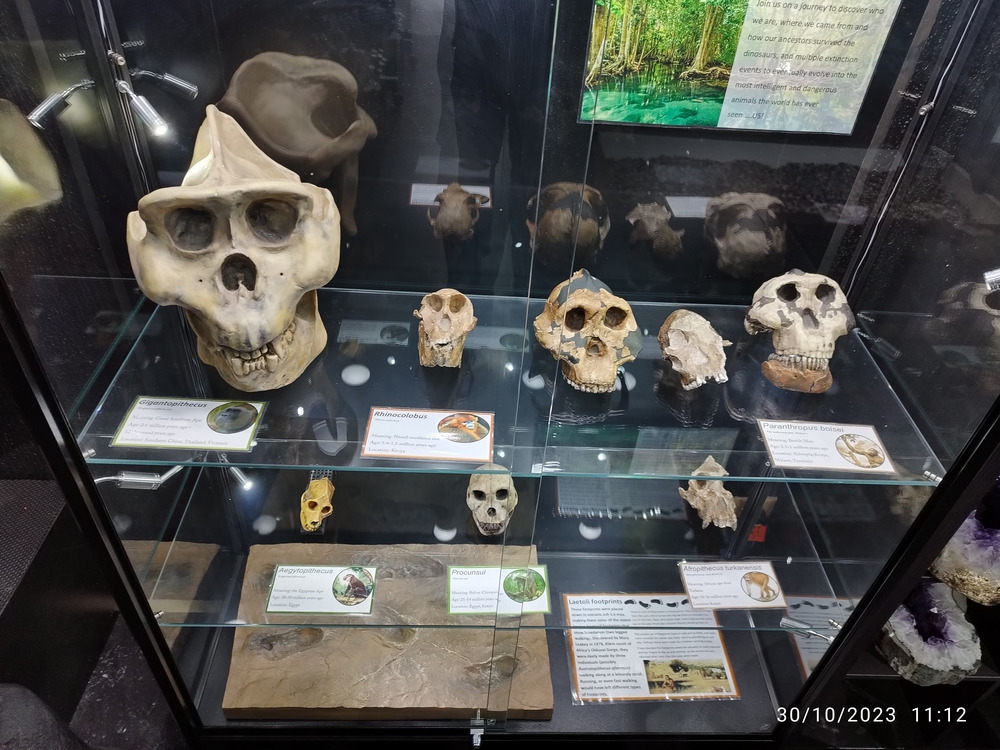In the gift shop of the Canberra Dinosaur Museum is a display that to me is the highlight of the whole museum. Casts of the skeleton of Lucy and skulls from other human ancestors and their cousins. The shocker for me is how much the size of the skulls differs from species to species. The skull of Gigantopithecus is at least twice the weight of a modern human skull. Whereas skulls of other human ancestors of about the same time are less than a tenth of the weight of H sapiens. We seldom see so many human ancestor skulls together in a single display.
Skeleton of Lucy, Homo habilis (you can see other skulls below with Neanderthal at the furthest right.
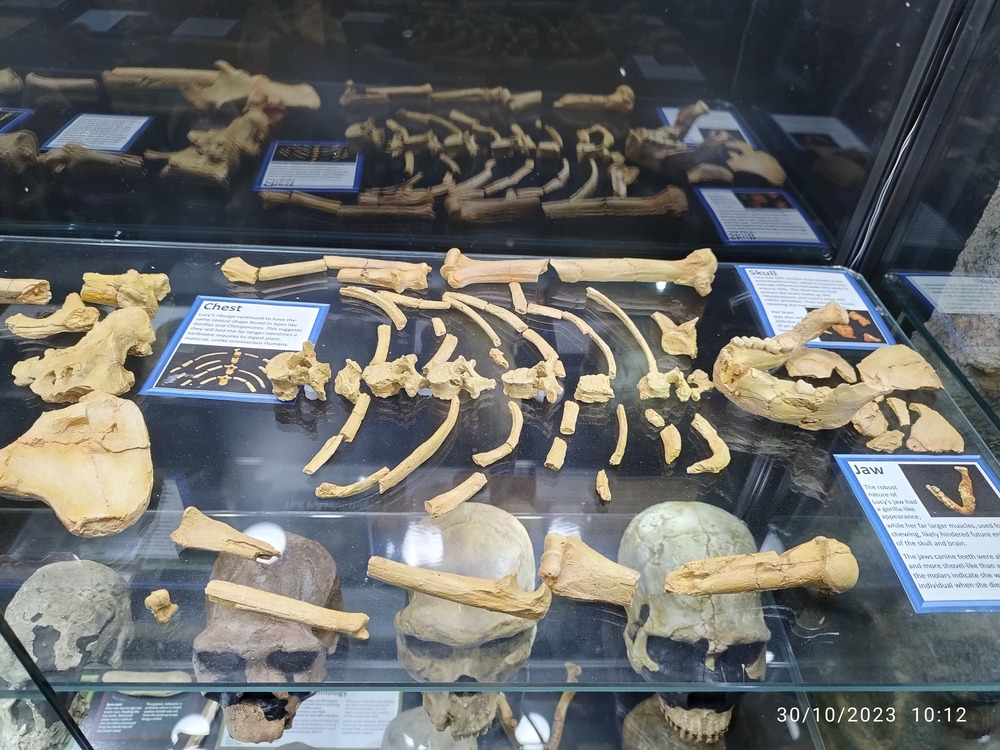
Laetoli footprints.

Africanus, Habilis and Erectus/Ergaster
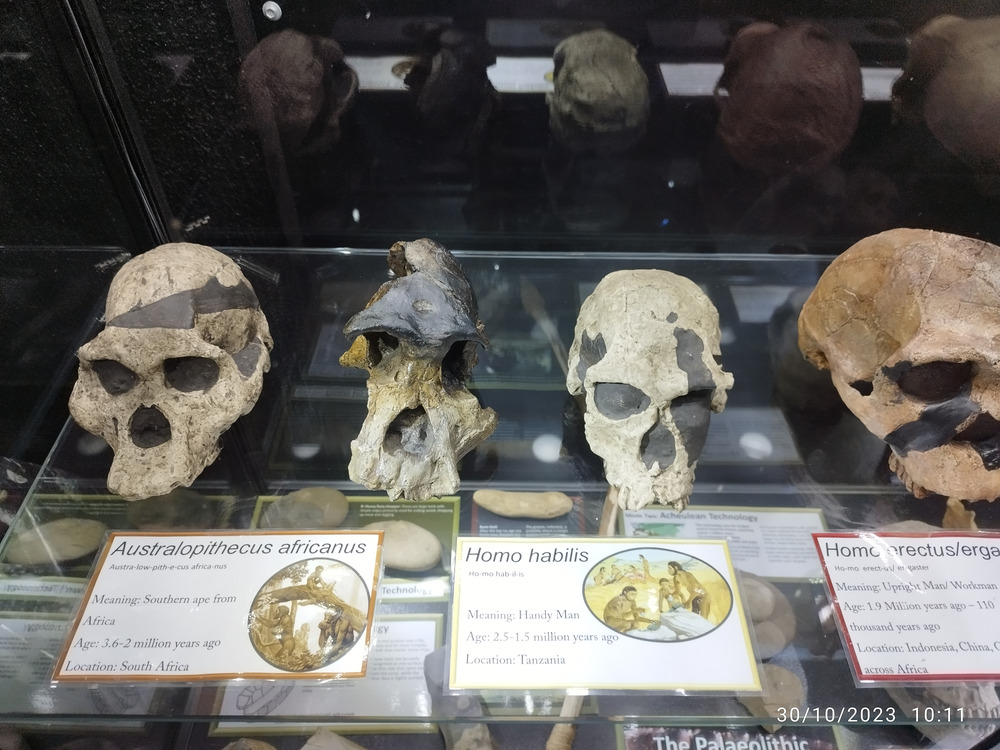
Erectus, Heidelberg and Neanderthal. The sequence of skull shapes is clear.

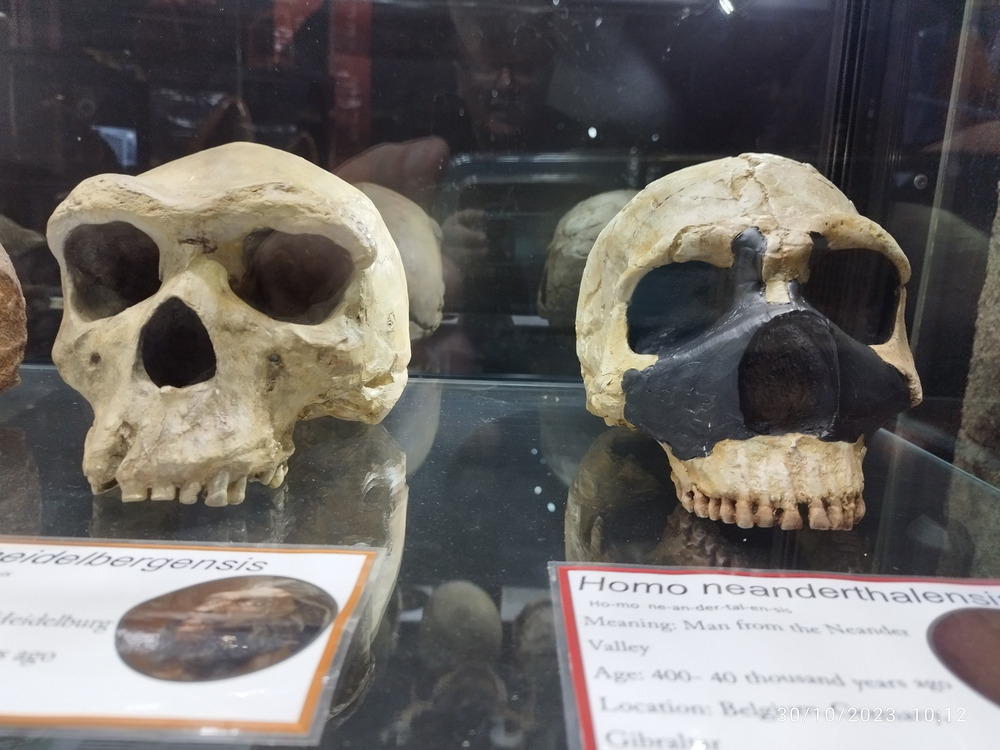
Neanderthal+Sapiens hybrid and Sapiens. There is a very clear difference.
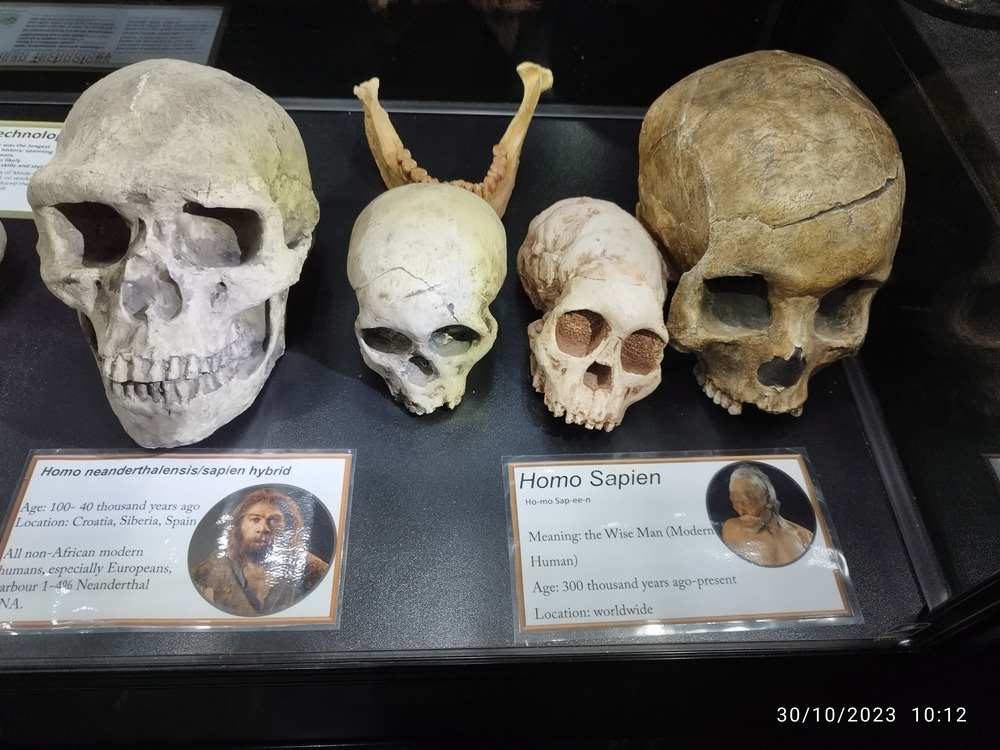
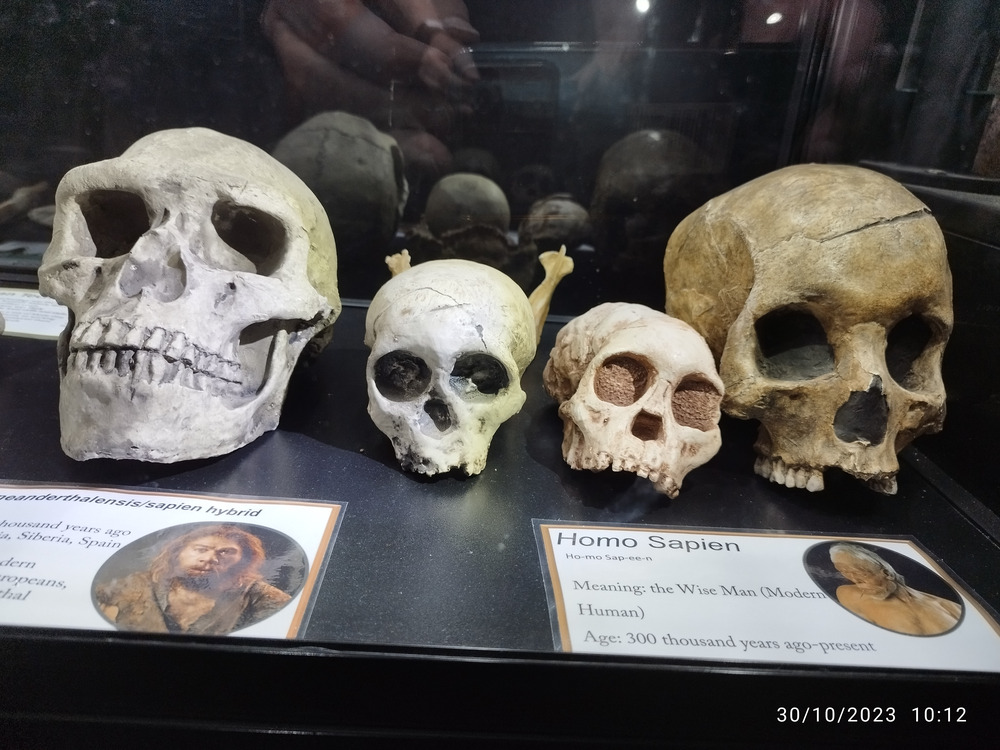
And all together.
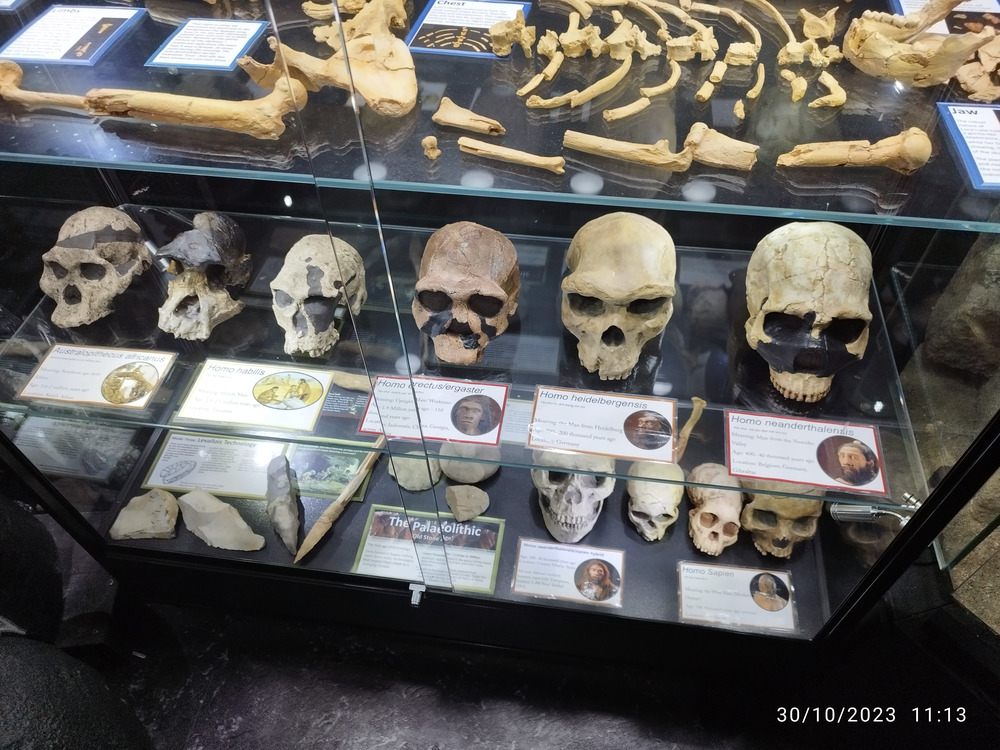
Gigantopithecus, Rhinocolobus, Paranthropus bosei, Aegyptopithecus, Proconsul and the Turkana boy. Note the enormous differences in size and robustness.
